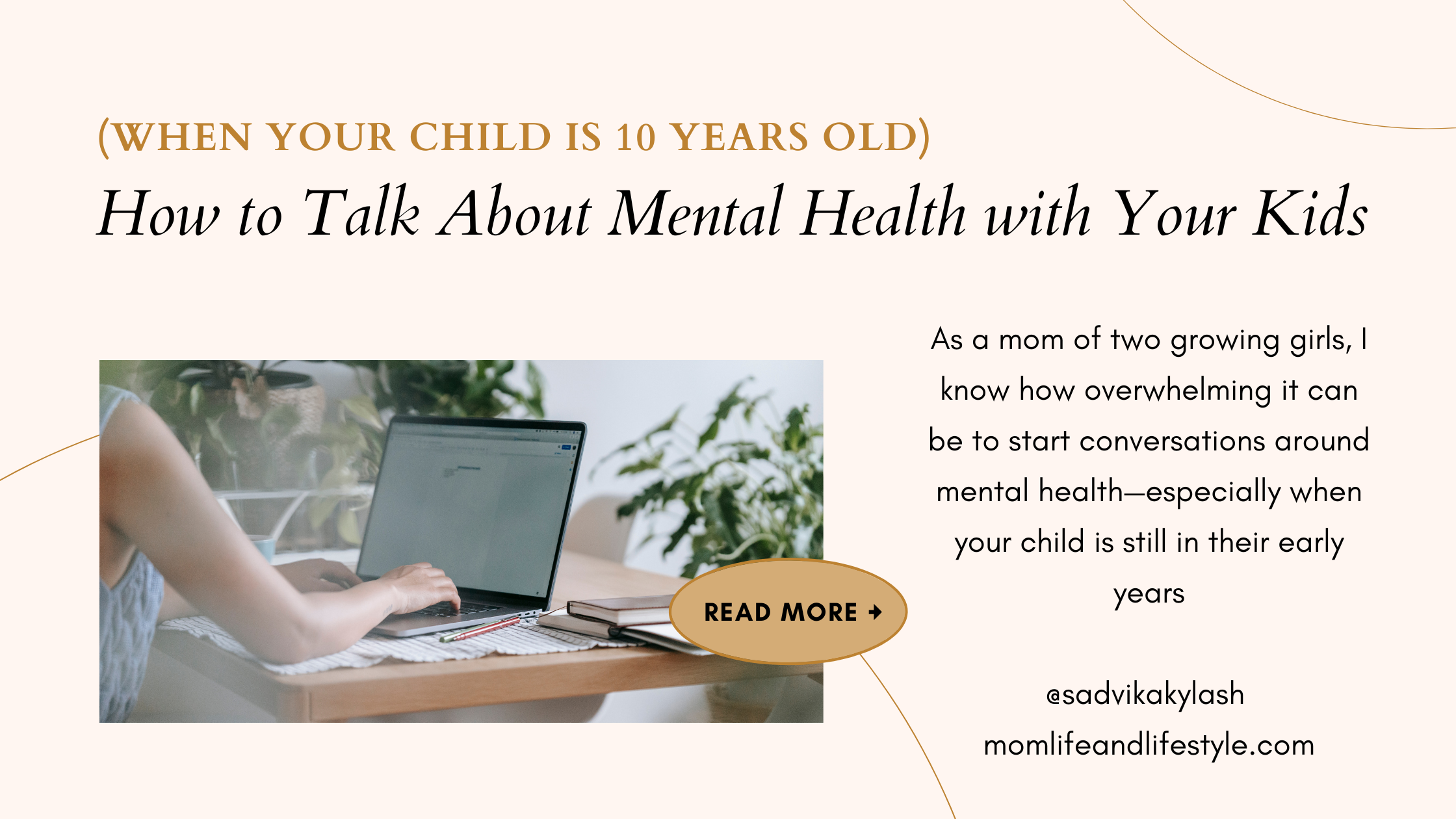Hey moms, Sadvika here!
As a mom of two growing girls, I know how overwhelming it can be to start conversations around mental health—especially when your child is still in their early years. My older daughter is 10 now, and recently, I realized just how important it is to create a safe space for her to talk about her feelings.
So, let’s dive into how we can talk about mental health with our kids—in a way that feels natural, supportive, and age-appropriate.
Why It’s Important to Talk About Mental Health Early
Many of us grew up in homes where emotions were either brushed aside or never discussed at all. But today, we have the chance to change that for our children.
By starting these conversations early, especially around the age of 10, we’re helping them:
- Understand and express their emotions
- Build emotional resilience
- Develop healthy coping skills
- Know that it’s okay to ask for help
Signs Your Child Might Need a Mental Health Check-In
At age 10, your child might not say “I’m feeling anxious” or “I’m sad,” but they may:
- Withdraw from favorite activities
- Get irritated easily
- Struggle with sleep or appetite
- Avoid talking about school or friends
Keep an open mind and heart when you notice changes in their behavior.
How to Start the Conversation
Here are some gentle, non-awkward ways to talk to your child about their mental health:
1. Use Everyday Moments
Bedtime chats or drive-time talks are great moments. You could say:
“Hey, how was your heart today? Did anything make you feel happy, sad, or worried?”
This opens the door to discuss feelings without pressure.
[how to talk to your child about emotions]
2. Name Emotions Together
Help them identify what they’re feeling. Use books, movies, or shows they enjoy and ask,
“How do you think she felt when that happened? Have you ever felt like that?”
3. Normalize Talking About Feelings
Let them know it’s okay to feel “bad” sometimes. Share your own feelings in simple ways:
“I felt nervous before my meeting today. So I took a few deep breaths, and it helped me calm down.”
[emotional intelligence for kids]
4. Teach Simple Coping Tools
Introduce deep breathing, drawing emotions, or even a “worry box” where they write down what’s bothering them.
Keep the Conversation Going
This isn’t a one-time talk. Keep checking in. Say:
“How are you feeling this week?”
“What was the best and toughest part of your day?”
These simple questions create emotional safety and consistency.
What If Your Child Doesn’t Open Up?
That’s okay. Just let them know you’re always there, ready to listen. Sometimes, journaling for kids or drawing helps express feelings when words don’t come easily.
[mental health activities for kids]
Final Thoughts, Mama 💛
Raising emotionally aware children doesn’t mean being perfect—it just means being present. If you’re trying to talk about mental health with your child, you’re already doing an incredible job.
Let’s continue building a world where our kids feel heard, safe, and understood. And remember—you don’t have to do this alone.
If this post resonated with you, don’t forget to check out How to Manage Your Mental Health as a Mom
Until next time,
– Sadvika
You can also read: Working Mom Struggles No One Talks About – And How to Overcome Them



